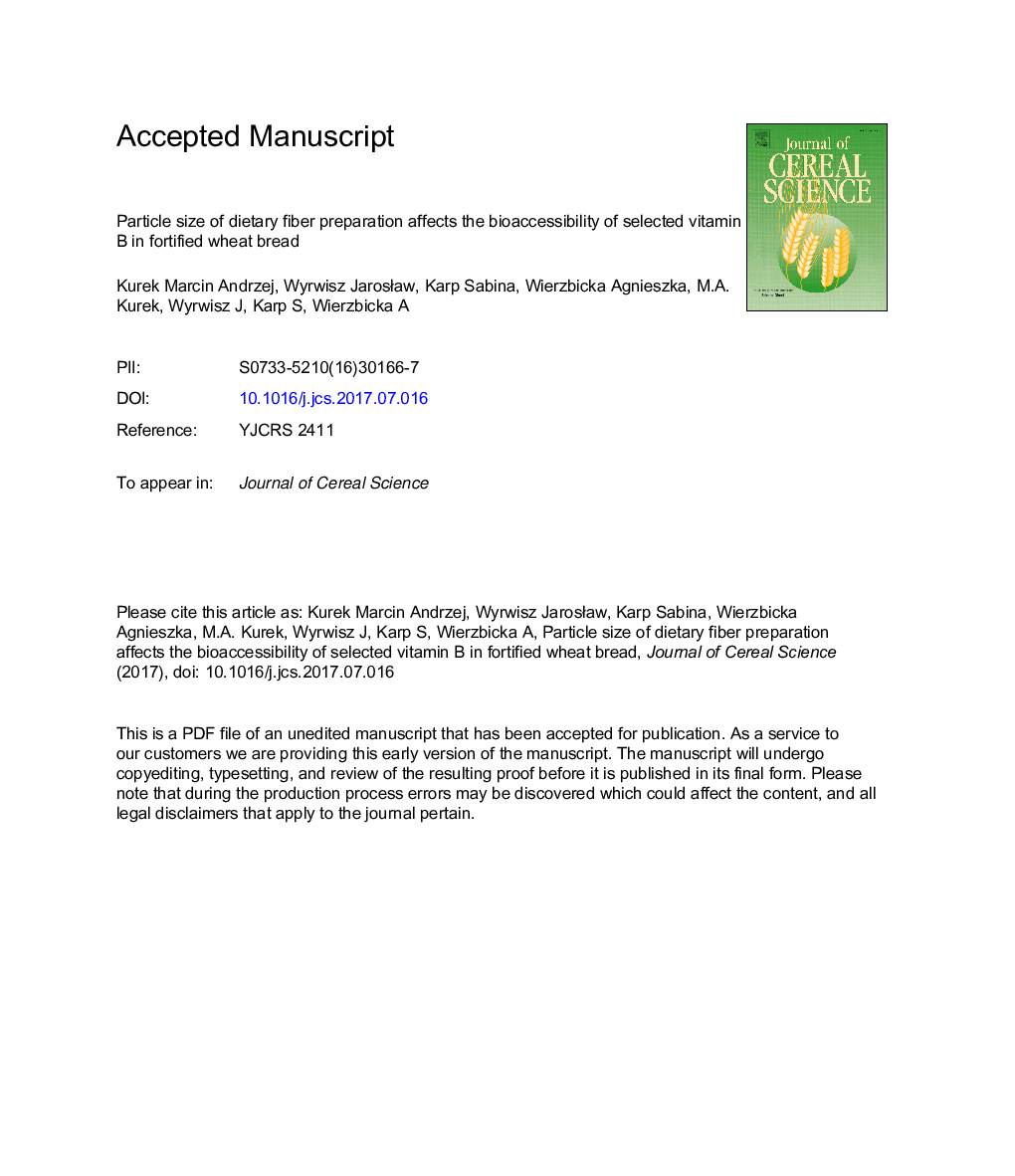| Article ID | Journal | Published Year | Pages | File Type |
|---|---|---|---|---|
| 5762416 | Journal of Cereal Science | 2017 | 22 Pages |
Abstract
Nowadays, there is an increasing interest in developing foods that have functional properties. The aim of the study was to identify the effect of the particle size (PS) of dietary fiber (DF) preparations on selected for B vitamins bioaccessibility in bread. Three different levels of particle size, obtained by sieving, were used (100, 190 and 280 μm) with different dietary fiber content in bread (2.1, 7.2 and 12.3%) according to a response surface methodology experiment design. The estimation of level of thiamine and riboflavin in bread revealed that the decreasing particle size of dietary fiber could negatively influence the bioaccessibility (69.1-91.2% and 40.9-50.2%, respectively). The interaction between the DF and PS also significantly influenced (p â¤Â 0.01) the bioaccessibility of niacin (60.2-70.2%) and pyridoxine (27.52-34.01%). This research shows that the optimal particle size of dietary fiber (124.12 μm) can be used in fortifying wheat bread without significantly influencing B vitamin levels and their bioaccessibility.
Keywords
Related Topics
Life Sciences
Agricultural and Biological Sciences
Agronomy and Crop Science
Authors
Marcin Andrzej Kurek, JarosÅaw Wyrwisz, Sabina Karp, Agnieszka Wierzbicka,
